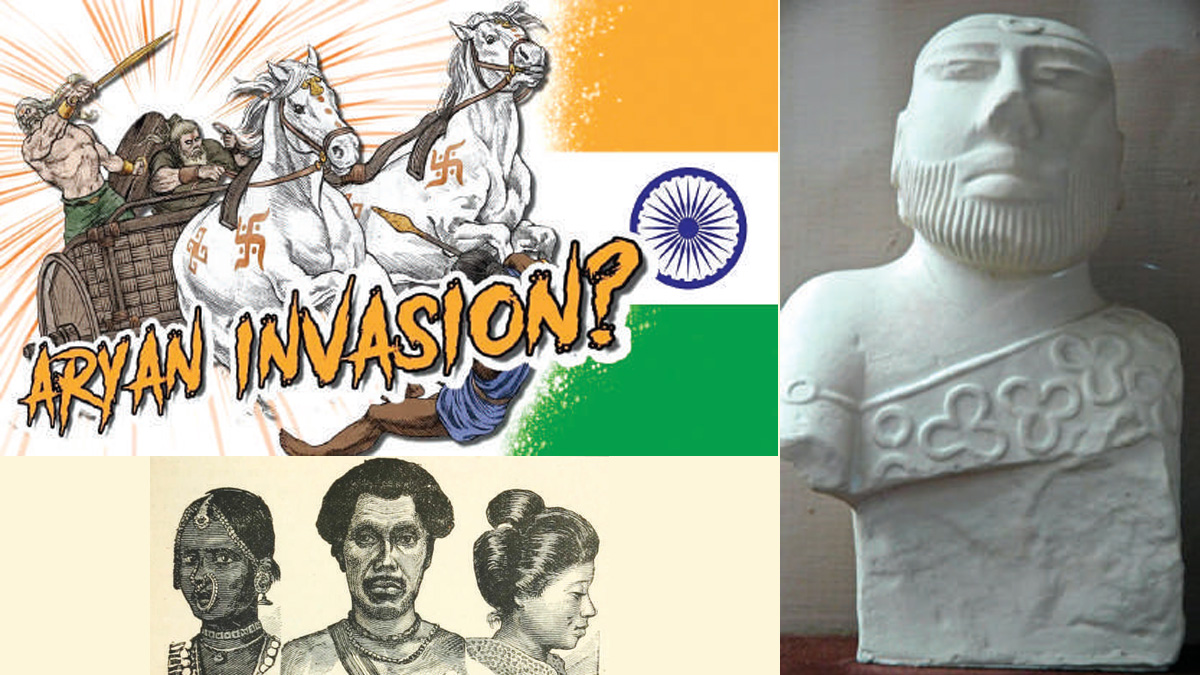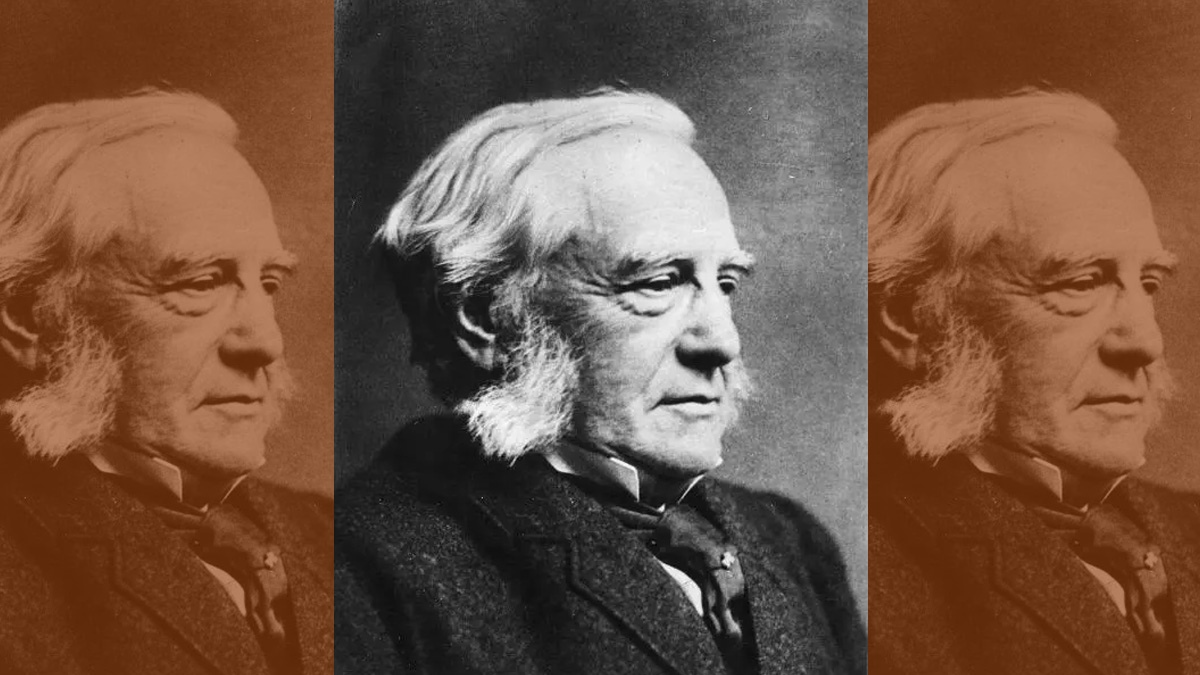Background
In many American schools, the teaching curricula on Hinduism are built around an obsolete framework called the Aryan Invasion/Migration Theory (AIMT). This theory postulates that a group of cattle herders from Central Asia, called Aryans, settled in India around 1,500 BCE. This group of cattle herders, the theory suggests, were successful in imposing their social customs – including a rigid caste structure – on the indigenous people.
There is now a large body of evidence that shows this to be a completely false and fabricated construct – indeed, to be little more than a figment of the racially motivated British colonial enterprise. By promoting this discredited theory, the American schools deny the Indian origin of India’s predominant culture and religion while giving credit for it to invaders from elsewhere.
If the purpose of education is to promote religious and cultural diversity, instill a sense of pride in one’s heritage, eradicate roots of prejudice, and develop a feeling of self-worth, then the current teaching method about Hinduism and the Indian society fails singularly in its mission. On the contrary, it effectively singles out Hinduism, exposing its adherents – the students of Indian origin – to ridicule and subtly portray Hinduism as inferior. In the contemporary world, no child would want to be associated with a system of belief represented as hierarchical and oppressive. It singles out Hindu culture and civilization for negative portrayal – a classic example of Hindudvesha (systemic Hinduphobia).
This article gives a comprehensive background of the Aryan Invasion/Migration Theory, how it came into being, and why it does not stand up to the new scientific evidence and should be dropped from the school curricula.
Aryan Invasion/Migration Theory – Brief History
- In the mid-18th century, the British East India Company, having gained political control over large parts of India, started programs to conduct linguistic, cultural, and ethnological studies of the Indian people.
- In the 1780s, William Jones, a British philologist and High Court Judge of the East India Company, discovered remarkable similarities between Sanskrit, India’s ancient scriptural language, Greek, Latin, and many other European languages ([1]).
- In 1786, Jones published his results, declaring a common origin of these languages. This led to speculations of an “Out of India” (OIT) theory, which postulated that the Europeans came from an advanced civilization in India. Not unexpectedly, OIT was received by the Europeans as a serious affront to their presumed civilizational superiority over other races.
- In the wake of Jones’ publication, Sanskrit language and texts became a major study area among European scholars.
- During the first half of the 19th century, German scholars, while searching for their civilizational roots, came to identify themselves with the valiant heroes of the Sanskrit epic, Mahabharata ([2]). This belief developed into a hypothetical construct, the primary tenets of which were as follows:
- The Germans and the Indians were branches of a common warrior race and were the original heroes of the Hindu epic Mahabharata
- The great epic was subsequently ruined by the villainous Brahmins with their redactions and manipulations ([3]).
- Intermixing of the Indo-Germanic people with the indigenous backward-dark-tribals resulted in racial degeneration of the Indian branch of the Indo-Germanic race.
- On the other hand, German people represented the pristine version of the original Indo-Germanic stock.
 Max Mueller, a German scholar of Sanskrit at Oxford University, may have been the first one to articulate, in 1848, the idea of an Aryan people while formulating his now famous (or notorious, depending on your viewpoint) “Aryan Invasion Theory” (AIT). Since it was introduced, AIT has undergone several revisions. Its current postulates stand as follows ([4]):
Max Mueller, a German scholar of Sanskrit at Oxford University, may have been the first one to articulate, in 1848, the idea of an Aryan people while formulating his now famous (or notorious, depending on your viewpoint) “Aryan Invasion Theory” (AIT). Since it was introduced, AIT has undergone several revisions. Its current postulates stand as follows ([4]):- The original inhabitants of India were “dark-skinned” Dravidians who established a peaceful, highly developed urban civilization known as the Harrapan or the Indus Valley Civilization.
- Around 1, 500 BCE, a nomadic race known as the Indo-Aryans invaded and conquered India from the West. These ‘Aryans / Indo-Europeans’ were proposed to have a variety of homelands, including Central Asia, Scandinavia, North Germany, Hungary, and Ukraine. They allegedly destroyed the ancient Dravidian civilization, oppressed the locals, and drove them to relocate to the south of India. (It is worth noting that Mueller’s timeline for the Aryan invasion was inspired by his belief in the infallibility of the Biblical view of human history, which proclaimed the beginning of humanity in the year 4004 BCE and the Great Flood in 2349 BCE).
- The Indo-Aryans were white-skinned people who spoke Vedic Sanskrit, wrote the Vedas, and enforced Indo-Aryan religion (what we call Hinduism today).
- In the late 20th century, in the face of the mounting evidence against AIT, the theory was further refined into what is now known as the Indo-Aryan Migration theory (IAMT), according to which the Indo-Aryans migrated into India rather than invaded it.
- Meanwhile, German scholars, building on their worldview of shared ancestry with the Indian people, coopted Mueller’s idea of the Aryan race into their ancestral identity. The resulting Aryan Race theory was to take an ugly turn in the first half of the 20th century when Adolf Hitler ([5]) adopted it and weaponized it against the Jewish people – with devastating consequences for the latter.
- Inspired by Mueller’s ideas, Herbert Risley, the Director of Ethnography and Census in the British colonial Government, developed a Nasal Index measurement tool. This Nasal Index, much like Phrenology, became an essential tool of Race Science to classify the traits of Indian communities.
- During the 1871 census survey of India, the word “caste” (English translation of the Portuguese word casta) was first used to classify the Indian society, thus overlaying and distorting the existing social structure based on a fluid Varna-Jati framework ([6]).
- Risley’s Nasal Index was used extensively to force-fit large swaths of the indigenous population into the caste taxonomy developed by the British bureaucrats. One of the newly created groups was named simply “the criminal caste” on the claim that they were biologically suitable for making a living exclusively by criminal means!
- In the wake of the 1871 census, courts were filled with cases of people objecting to the high-handed enforcement of the caste classification. However, the hubris of the colonial system would prevail over their objections.
- Middleton, one of the two census superintendents in 1921, observed that the so-called occupational castes had been primarily manufactured and almost entirely preserved as separate castes by the British Government. “We pigeonholed everyone by caste and if we could not find a true caste for them, labeled them with the name of a hereditary occupation. We deplored the caste system and its effects on social and economic problems, but we are largely responsible for the system we deplore”.
Evidence Against AIT
From the time the theory was first postulated, its legitimacy has been hotly contested. Many arguments, both in favor and against, have been the staple fodder for thousands of books, research papers, newspapers, and magazine articles. Many of these arguments are too esoteric to be discussed here and, in any case, have failed to settle the matter.
However, recent advances in genetics and satellite imagery have brought forth new evidence which goes a long way to settle the case against AIT:
- Refutation of AIT’s dating of Rig Veda
- Rig Veda, India’s foundational scriptural text, contains numerous references to the Sarasvati River, which is variously described as the “greatest of rivers,” “glorious,” “loud roaring,” and “mother of floods.”
- However, the Sarasvati River was nowhere to be found until recently, when modern satellite imagery was able to locate the dry bed that once was this mighty river ([7]).
- Studies have also shown that monsoon declined monotonically after 5,000 BCE, gradually weakening the Sarasvati, leading to its virtual extinction by around 1,500 BCE ([8]).
- This completely debunks the AIT account that Rig Veda was composed after the purported Aryan invasion/migration circa 1,500 BCE and indicates that it was composed closer to 5,000 BCE when the river was in its prime ([9]).
- Archeological evidence supports India’s cultural and civilizational continuity ([10]).
- Extensive archeological studies provide no evidence that the Harrapan civilization, the presumed ancient home of the Dravidians, was destroyed by warfare. The evidence, instead, suggests a slow eastward migration of the population due to a shift in the climatic patterns resulting in sustained loss of water resources.
- The evidence further shows that many of the traditions and customs prevalent in the Harrapan civilization continue to exist in modern India, indicating that the Harrapan and Aryan cultures are facets of the same civilization.
- Genetic evidence
- Recent research shows the absence of any significant outside genetic influence in India in the past 10,000 – 15,000 years. ([11])
- Another research study excludes any significant patrilineal gene flow from East Europe to Asia, including India, in the last 5,000 to 7,000 years ([12]).
- A third research paper concludes that Indian populations are genetically unique ([13]).
- Yet another study demonstrates that most Indians are genetically alike, thus debunking one of the central postulates of the AIT, namely the Aryan-Dravidian divide ([14]).
- On the contrary, there is strong evidence to support an Out of India Theory ([15],[16]).
- While some genetic research purports to support AIT, it has not been able to refute the large body of genetic evidence that has been found against AIT.
Many other pieces of data lend further support to the anti-AIT argument. Two such examples should suffice to make the point:
- The Vedic literature – supposedly written by the invading Aryans – contains extensive references to prominent landmarks of India but makes no mention of a former homeland. This collective amnesia of the alleged Aryan race concerning their ancestral home is highly unusual for migrant populations.
- The number of Sanskrit manuscripts in existence today is roughly 1000 times the number of manuscripts available in Greek, Latin, and other ancient European languages combined. Such an overwhelming disparity in the literary outputs between the Aryans and the Europeans is difficult to reconcile with the AIT postulation of their shared heritage. ([17])
What Keeps AIT Alive?
According to Prof. Klaus Klosermaier, a well-known scholar of ancient Indian history, “The AIT (Aryan Invasion Theory) is based purely on linguistic conjectures which are unsubstantiated.” ([18])
However, with nearly 175 years of the constant drumbeat from the progenitors, purveyors, and pushers of the AIT hypothesis, there is far too much academic reputation and obduracy at stake to let the beast die in peace. Many of these eminent scholars, as Michel Danino’s 2018 paper ([19]) suggests, have even resorted to blatant dishonesty to shore up their arguments. Here is a direct quote from Danino’s paper: “This collection highlights how eminent historians and linguists, apart from miscellaneous other writers, have indulged in such scholarly malpractices, some of which qualify as fabrication.”
Examples of deliberate distortions and misrepresentations examined in Danino’s paper include:
(1) Invention of nonexistent texts.
(2) Deliberate mistranslations of texts.
(3) Invention of nonexistent archaeological evidence.
(4) Distortion of archaeological evidence.
(5) Fundamental methodological flaws include circular reasoning, oversimplification, etc.
(6) Recycling of long-discarded theories such as racial ones.
(7) Misquoting, blanking out or demonizing of scholars opposing the Aryan paradigm.
Psychological and Socio-Political Impacts of AIT ([20])
- AIT gives credit for Indian culture to invaders from elsewhere while denying its Indian origin.
- It devalues India’s culture by portraying it as a “gift” from outsiders.
- It suggested that Indian culture was not a culture in its own right but a synthesis of other cultures.
- It implies that Hinduism was not an authentically Indian religion but a result of cultural imperialism.
- It suggested that Indian culture was static and only changed under external influences.
- It implies that indigenous people were incapable of creatively developing their faith and could only acquire new ideas from other races by invasion or other processes.
- It downgrades the intellectual status of India and its people by giving a falsely late date to elements of Indian science and culture.
- It promotes the idea that race is a biologically based concept.
- It suggested that the light-skinned Aryan invaders forced the dark-skinned Dravidian people of the South of India to convert to the Aryan faith.
- It creates an artificial fault-line among the Indian people, giving the appearance that North Indians are foreigners and Dravidians are native Indians.
- It provided a basis for racism in the Imperial context by suggesting that the peoples of Northern India were descended from invaders from Europe and so racially closer to the British colonizers.
- It gave a historical precedent to justify the role and status of the British colonizers, who could argue that they were transforming India for the better in the same way that the Aryans had done thousands of years earlier.
Conclusions
There is now a mountain of evidence that shows that the Aryan Invasion Theory or its migration version is a myth. It is a deeply flawed and dangerous relic of a racially motivated colonial enterprise. It is about time that civilized societies did what is right, i.e., to put it in the only place where it belongs – the trash bin of history.
[1] Jones, William, A dissertation on the orthography of Asiatic words in Roman letters, Asiatic Researches, 1: 1–56 (1786).
[2] Bagchee and Adluri, The Nay Science, p.56
[3] Here the Brahmins – the educated/intellectual segment of the Indian society – were being gratuitously cast into a villainous role to create a plausible explanation for why the great epic, Mahabharata, had failed to glorify the Indo-Aryan people. This highly prejudicial casting of the Brahmins would become a permanent feature of all subsequent discourse about Indian society.
[4] Aryan Invasion Theory (AIT), https://officerspulse.com/aryan-invasion-theoryait/
[5]Hitler’s rare utterance on the Hindus was a racial interpretation of the AIT, “We know that the Hindus in India are a people mixed from the lofty Aryan immigrants and the dark-black aboriginal population and that this people is bearing the consequences today; for it is also the slave people of a race that almost seems like a second Jewry” (Koeonrad Elst, Still No Trace of an Aryan Invasion, p.104, Aryan Book International, 2018)
[6] Dirks, Nicholas B (2001), Castes of Mind: Colonialism and Making of Modern India, Princeton University Press, Chapter 9.
[7] Danino M. The Lost River: On the Trail of the Sarasvati; Penguin Books (2010)
[8] Sarkar A. et al., Oxygen isotope in archaeological bioapatites from India: Implications to climate change and decline of Bronze Age Harappan civilization; Sci. Rep. 6, 26555; DOI: 10.1038/srep26555 (2016).
[9] A.L. Chavda, Aryan Invasion Myth: How 21st Century Science Debunks 19th Century Indology, https://indiafacts.org/aryan-invasion-myth-21st-century-science-debunks-19th-century-indology/
[10] Lal B. B., The Rigvedic People: Invaders? Immigrants? or Indigenous? Aryan Books International; First Edition (2015)
[11] Sengupta S. et al., Polarity and temporality of high-resolution Y-chromosome distributions in India identify both indigenous and exogenous expansions and reveal minor genetic influence of Central Asian pastoralists, Am J Hum Genet. 78:202–21 (2006).
[12] Underhill P. A. et al., Separating the post-Glacial coancestry of European and Asian Y chromosomes within haplogroup R1a, Eur J Hum Genet. 2010; 18:479–84. DOI: 10.1038/ejhg.2009.194.
[13] Tamang R., Thangaraj K., Genomic view on the peopling of India, Investig. Genet, 3, 20. (2012).
[14] Dolgin E., Indian ancestry revealed, doi:10.1038/news.2009.935 (2009)
[15] Sharma S. et al., The Indian origin of paternal haplogroup R1a1* substantiates the autochthonous origin of Brahmins and the caste system. Journal of Human Genetics 54, 47–55; doi:10.1038/jhg.2008.2 (2009)
[16] Lucotte G., The Major Y-Chromosome Haplotype XI – Haplogroup R1a in Eurasia. Hereditary Genet, 4:150. DOI: 10.4172/2161-1041.1000150 (2015)
[17] A Google query with the search string “How many Sanskrit manuscripts are there” returned 30 million as the top answer; the same query with “How many Latin, Greek, and ancient European manuscripts are there” brought up less than 30,000 manuscripts.
[18] Klostermaier, A Survey of Hinduism, p. 21 (2007)
[19] Danino, “Fabricating Evidence in Support of the Aryan Invasion / Migration Theory,” (2018); https://www.academia.edu/39599444/Fabricating_Evidence_in_Support_of_the_Aryan_Invasion_Migration_Theory
[20] Many of the points here were taken from Frawley, D., Aryan Invasion Theory – Part 1, http://www.hinduonline.co/DigitalLibrary/SmallBooks/MythofAryanInvasioninIndiaDavidFrawleyEng.pdf



 Max Mueller, a German scholar of Sanskrit at Oxford University, may have been the first one to articulate, in 1848, the idea of an Aryan people while formulating his now famous (or notorious, depending on your viewpoint) “Aryan Invasion Theory” (AIT). Since it was introduced, AIT has undergone several revisions. Its current postulates stand as follows (
Max Mueller, a German scholar of Sanskrit at Oxford University, may have been the first one to articulate, in 1848, the idea of an Aryan people while formulating his now famous (or notorious, depending on your viewpoint) “Aryan Invasion Theory” (AIT). Since it was introduced, AIT has undergone several revisions. Its current postulates stand as follows (![[ India Today ] Ohio senator JD Vance thanks wife, a Hindu, for helping him find Christian faith](https://hinduvishwa.org/wp-content/uploads/2024/06/us-senator-jd-vance-reveals-how-his-hindu-wife-usha-helped-him-find-his-christian-faith-image-re-272530504-16x9_0-120x86.webp)









